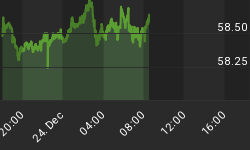That interest rates have an impact on corporate earnings would seem to be a given. "Fed watching" has become a popular investment community activity because participants know that the activities of the Federal Reserve will inevitably have an impact on their portfolios.
Knowing that interest rates have some sort of an impact on earnings, we wondered which interest rates have the most impact and when that impact is felt the strongest. Short term rates and long term rates don't always move in lock-step. For example, from March 31, 1988 to March 31, 1989, short term rates, as measures by the 90 Day Treasury Bill yield, rose 314 basis points while long term rates, as measured by the 10 Year Treasury Note yield, only rose 99 basis points. And sometimes, they even move in opposite directions. From June 30, 1994 to June 30, 1995, the 90 Day T-Bill yield rose 129 basis points while the 10 Year T-Note yield declined 113 basis points.
So we performed separate analyses for short term and long term rates. Then, having wanted to know the time involved until the maximum impact of the interest rate environment was felt, we lagged the interest rate data against corporate earnings growth by various spans to see when this maximum effect was achieved.
Starting with the data set of year-over-year S&P 500 operating earnings growth versus the 90 Day T-bill, we found that the impact of these rates correlated the strongest with changes in earnings twelve months into the future. However, this correlation is not very strong. (R^2 = 0.24) The chart that follows plots projected earnings from this regression analysis versus the actual earnings.

This chart of actual earnings versus the projected earnings from the T-Bill data is really nothing special. The formula from the regression analysis is financially intuitive. Higher T-Bill yields pointed to lower earnings growth. Some of the peaks and valleys of the expected changes in operating earnings seem to coincide, but at no point in this regression analysis did T-Bill yield ever forecast a decline in S&P operating earnings.
As underwhelming as the T-Bill yield was in forecasting changes in corporate earnings, the 10 Year T-Note yield was even worse. No amount of time lag generated a meaningful correlation between current T-Note yields and future changes in corporate earnings. The chart was nearly a flat line. The best R^2 observed never eclipsed 0.10. We can only conclude that the 10 Year T-Note yield, by itself, has absolutely nothing to do with future changes in corporate profitability.
It was a disappointment to have done all this work and to come up with no meaningful way to link current interest rates to future corporate earnings. However, knowing that the SHAPE of the yield curve is as carefully watched as the yields themselves, an analysis was done with the spread between 90 Day T-Bills and 10 Year T-Note yields against future changes in corporate profitability. This analysis resulted in a formula with an impressive R^2 (0.46) and a chart that, with a few exceptions, shows projected and actual earnings curves that mesh very well.

There are three notable periods where actual earnings sharply deviated from the values projected by this analysis. The first (A) is from the post-Kuwait invasion period and the first Gulf War. The other two (B&C) are not so easily explained, but could be attributed to the disruption of the capital expenditure cycle, where certain spending was accelerated because of Y2K issues, leading to unexpectedly strong earnings leading up to the year 2000, with a let-down to follow.
With so many factors driving changes in corporate earnings... fiscal policy, weather-related disruptions, geopolitical events... that we can identify one factor, so easily measured, that is responsible for nearly half of the changes we see in corporate profitability is remarkable. It's a very powerful tool for projecting year-ahead changes in corporate earnings. However, if you do use it, you are cautioned to be mindful of those potential events that will always trump monetary policy when it comes to the ability of American corporations to grow their earnings.
The projections from the last chart come from the following equation:
% D Y/Y Quarterly Earnings 4 quarters from now = 9.47 x [T-Note yield - T-Bill yield] - 8.83%















